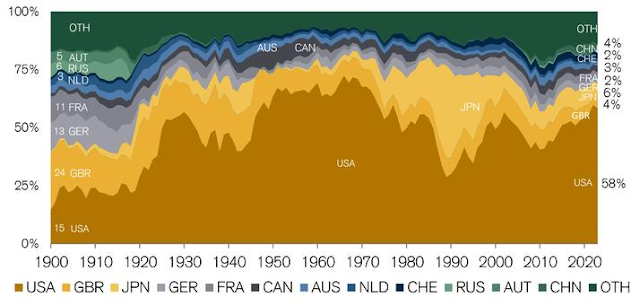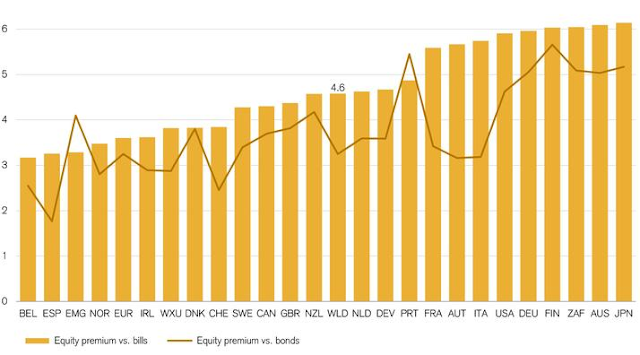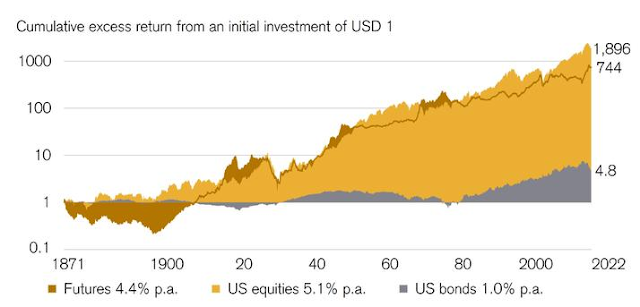The Credit Suisse Global Investment Returns Yearbook 2023 offers unique data on long-term investment returns. Read the latest edition to discover how different asset classes have performed since 1900 around the world, and to find out how a historical perspective can help today’s investors plan for the future.
The Credit Suisse Global Investment Returns Yearbook is based on a unique database that offers a historical record of the real returns from equities, bonds, cash and currencies for 35 countries. The data spans developed and emerging markets, and stretches back to 1900. As well as being an important source of rich data on long-term investment returns, the 2023 edition contains analysis on topical issues that investors face today. Key highlights:
Amid turmoil, a long-term perspective still matters
Evolution of equity markets since 1900:
 |
| Global market share of the listed equity markets |
Risk premia exist for a reason
A historical risk premium in equity and bond returns relative to bills exists for a reason, that being a necessary payment for the risk of volatility and drawdown. After a prolonged period of high and stable real returns, our report documents the periods of stress over time for bonds and equities. The Yearbook has shown how portfolio diversification can mitigate such risks.
However, reaping the benefits of diversification is also a long-term concept and can let you down in the short term. The recent fortunes of 60/40 equity/bond strategies are a painful case in point, having trusted too heavily in the recent negative correlations between the two assets rather than properly consulting the history books.
 |
| Equity premium versus bills (bars) and versus bonds (line) |
Futures, stocks and bonds, 1871–2022
Reappraising commodities in an era of stagflation
This year’s focus chapter delves into the pernicious influence of inflation on returns from bonds and equities, but also the role of commodities within the mix. A look at the highly topical subject of stagflation rather than just inflation provides added reason for investor concern. There is also troubling news for the growing consensus that conditions will return to normal with low inflation re-established. A keener look at history would highlight how rare this actually is.
Rising commodity prices, particularly energy-related, have of course been a key driver of the steep rise in inflation we have witnessed in 2022. However, we explore the role that commodities play as an asset class. Our finding is that while investing in individual commodities have themselves yielded very low long returns, thanks to the power of diversification, portfolios of futures have provided attractive risk-adjusted long-term returns.
 |
| Cumulative return of the investment of 1 USD since 1871. |
The importance of the starting date is obvious, as the late 19th century shows a decade long bear market in commodities, while -on balance- stock markets trend higher after the 1873 downturn.
Text: Press release of Credit Suisse Research
Graphs from the press release: Copyright © 2023 Elroy Dimson, Paul Marsh and Mike Staunton, London Business School
Postscript (23-03-2023)
This can very well be the last edition of the CSRI global investment returns yearbook, or else we may find it back with a different sponsor name.
